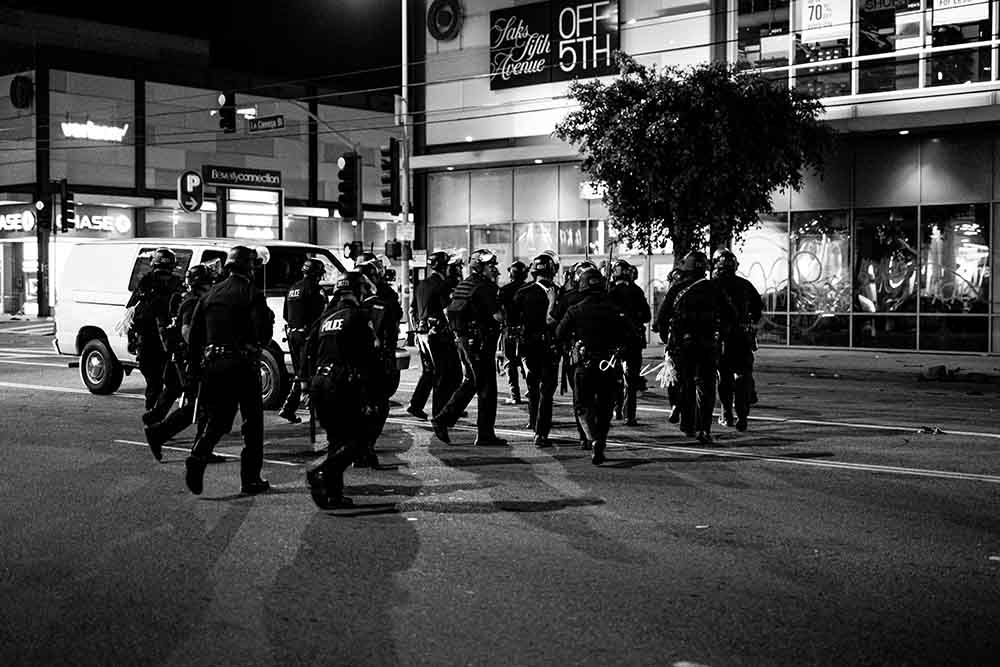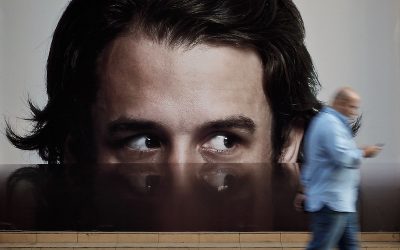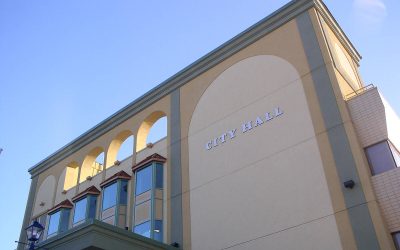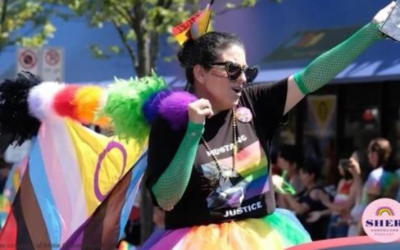The May 25, 2020 death of George Floyd under the knee of police officer Derek Chauvin reignited public conversation about racially motivated killings by police. The incident was disturbing, and it begs the question, how disproportionate are the number of African Americans killed by police of another race? How big of a problem is this?
The issue of racism contributing to needless deaths of African Americans has been brought to the forefront by the movement Black Lives Matter (BLM). The “about” page of the BLM website says the organization “was founded in 2013 in response to the acquittal of Trayvon Martin’s murderer.” Officer George Zimmerman was acquitted in the trial. Community organizers Alicia Garza and Patrisse Cullors believed both the shooting and acquittal were racially motivated and launched the hashtag #BlackLivesMatter.1
BLM claims its “mission is to eradicate white supremacy” and “intervene in violence inflicted on Black communities by the state and vigilantes. . . .We are working for a world where Black lives are no longer systematically targeted for demise.”
In reality, by the time BLM had launched, black shooting deaths were long on the wane. Records from the Centre for Disease Control and Prevention showed that the number of blacks killed by police officers dropped 40 percent in real numbers between 1968 and 2011. This was even more impressive given that the African-American population rose by 22 million during that time.2
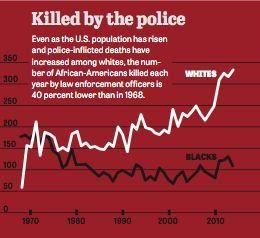
In 2016, the Washington Post cited numerous studies that showed decades of police deference to blacks—not an inclination to kill them.3 One 1977 analysis found that officers fired more shots at whites because of “public sentiment concerning treatment of blacks.” A 1978 study found that 60 percent of black suspects shot by officers were carrying handguns, versus 35 percent of white suspects. In 2001, it was found that blacks were responsible for 43 percent of the killing of officers despite having just 12 percent of the population. When David Klinger at the University of Missouri-St. Louis interviewed more than 100 police officers, he found “evidence of increased wariness about using deadly force against black suspects for fear of how it would be perceived and the associated consequences.”
Of America’s 6,261 black homicide victims in 2013, less than 3 percent were by police, and nearly all of the victims were armed and dangerous. The larger issue was black-on-black crime than racially motivated crime from police. More than 9 of 10 blacks who were murdered had another black person as their killer. Murderers numbered 34.4 of 100,000 among African Americans and 4.5 among whites.4
It’s why Dennis Prager wrote, “The problem with the mantra and the hysteria is not that no blacks are ever killed unjustifiably by police. The problem is that it is so rare as to constitute a libel.” Prager’s article was entitled, “Black murderers matter,” as the statistics showed that black-on-black crime was a far, far greater issue.5
Wilfred Reilly drew similar conclusions. The African American is also a political science professor at Kentucky State University and author of “Hate Crime Hoax: How the Left is Selling a Fake Race War.” 6 His examination of incidents in 2015 found just 17 cases when an unarmed black person was killed by a white cop.
By Reilly’s count, American police killed about 1,200 people in 2015. Only 258 deaths were African-American, comprising 21.5 percent of the total. Blacks comprise 12.7 percent of the population. Reilly says this number does not indicate racism, since the Bureau of Justice Statistics reports that blacks are 2.4 times more likely to commit a crime.7 A proportionate number of blacks killed by police would have actually been 365.
In 2016, attorney and Fellow of the Manhattan Institute Heather MacDonald made what too many would have seemed a surprising claim. “Four studies published this year showed that if there is a bias in police shootings, it works in favour of blacks and against whites.” 8 The studies follow.
- “An Assessment of Deadly Force in the Philadelphia Police Department” found that in officer-involved shootings, white suspects were unarmed in 8 of the 32 cases (25 percent) but blacks were unarmed in 45 of the 285 cases (15.8 percent).9
- In a study of 12 different racially diverse cities, the Center for Policing Equity found that the rate of whites to have lethal force used against them following arrest for a violent felony was twice that of blacks. 10
- Harvard professor Roland Fryer found no racism against blacks in his nationwide analysis. In Houston, for example, violent or armed suspects were 24 percent less likely to be shot if they were black. 11
- At Washington State University, Dr. Lois James found a “reverse racism effect”12 in three separate studies. 13 Police officers were less likely to shoot unarmed black suspects than those of other races in simulated threat scenarios.
Some incidents suggest that the BLM narrative has made police show too much deference to blacks, to the detriment of police themselves. In Chicago, one black suspect in a car crash in 2016 bashed the face of a female officer into the concrete and tore out chunks of her hair. The officer said she refrained from using her gun because she did not want to be the subject of the next BLM viral video.14 It should be the goal that police disregard race, not to give inadvisable deference on the basis of race.
BLM opposes policies like stop-and-frisk or policing small infractions in accordance with “broken windows policing.” 15 In October of 2015, then-FBI Director James Comey said the “Ferguson Effect” left police feeling “under siege” and being less proactive.16 A year later, Comey told the International Association of Chiefs of Police in San Diego that the “narrative that policing is biased and violent and unfair” had resulted in “more dead young black men” and “threatens the future of policing.” 17
As Comey spoke, police deaths were up 47 percent over the year before. In Chicago, they had doubled. There, the Ferguson Effect lowered police stops from 157,346 during the first quarter of 2015 down to 20,908 in the first quarter of 2016–a 90 percent freefall.18
Gun crimes and violence spiked in Chicago and increased nationwide. Murders in the U.S. rose from 14,164 in 2014 to 15,883 in 2015, then 17,413 in 2016. These were the largest jumps in nearly half a century.19 By 2016, 1,700 more blacks had died of murder than just two years prior.
Meanwhile, the stats on deaths at the hands of police remain the same. The Washington Post reports, “Analysis of more than five years of data reveals that the number and circumstances of fatal shootings and the overall demographics of the victims have remained relatively constant.”20
In 2019, a study by the National Academy of Sciences confirmed what almost every other study had already demonstrated. There was “no evidence of anti-Black or anti-Hispanic disparities across shootings, and White officers are not more likely to shoot minority civilians than non-White officers. Instead, race-specific crime strongly predicts civilian race. This suggests that increasing diversity among officers by itself is unlikely to reduce racial disparity in police shootings.”
In February of 2020, the African-American Wilfred Reilly made a strong, ironic, but justifiable conclusion. “In reality, Black Lives Matter was to a striking degree based upon false claims, supported by dubious anecdotes, and actually responsible for an upsurge in violent crime. It is hard to avoid a brutal but accurate one-sentence epitaph: Black Lives Matter got a lot of young brothers killed.”
[show_more more=”SeeEndnotes” less=”Close Endnotes”]
- https://blacklivesmatter.com/about/
- https://www.thetrumpet.com/13723-the-deadly-lie-behind-black-lives-matter.
- https://www.washingtonpost.com/news/true-crime/wp/2016/04/27/this-study-found-race-matters-in-police-shootings-but-the-results-may-surprise-you/.
- https://www.nationalreview.com/2015/04/black-murderers-matter-dennis-prager/.
- https://www.nationalreview.com/2015/04/black-murderers-matter-dennis-prager/.
- https://www.amazon.ca/Hate-Crime-Hoax-Lefts-Campaign/dp/1621577783.
- https://www.spiked-online.com/2020/02/04/why-black-lives-matter-has-been-bad-for-black-people/.
- https://www.realclearpolitics.com/video/2016/09/23/heather_macdonald_on_black_lives_matter_does_the_truth_matter.html.
- https://www.phillypolice.com/assets/directives/cops-w0753-pub.pdf.
- https://policingequity.org/images/pdfs-doc/CPE_SoJ_Race-Arrests-UoF_2016-07-08-1130.pdf.
- https://scholar.harvard.edu/fryer/publications/empirical-analysis-racial-differences-police-use-force.
- https://ccj.asu.edu/content/expert-insight-criminal-justice-dr-lois-james-her-controversial-study-reverse-racism-effect.
- https://www.washingtonpost.com/news/true-crime/wp/2016/04/27/this-study-found-race-matters-in-police-shootings-but-the-results-may-surprise-you/?mod=article_inline.
- https://www.wsj.com/articles/the-myth-of-the-racist-cop-1477261025.
- https://www.joincampaignzero.org/solutions/#brokenwindows.
- https://www.cnn.com/2015/10/26/politics/fbi-comey-crime-police/index.html.
- https://www.wsj.com/articles/the-myth-of-the-racist-cop-1477261025.
- https://www.wsj.com/articles/the-myth-of-the-racist-cop-1477261025.
- https://www.city-journal.org/html/ferguson-effect-lives-14919.html.
- https://www.washingtonpost.com/graphics/investigations/police-shootings-database/, retrieved June 12, 2020.
[/show_more]
Lee Harding is a research associate with the Frontier Centre for Public Policy.
Photo by Andrew “Donovan” Valdivia on Unsplash
